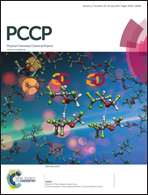Abstract
Various ab initio calculations using the density-functional (DFT), the second order Möller–Plesset perturbation (MP2) and self-consistent reaction field (SCRF) theories were performed on thirteen theoretically possible inositol stereoisomers. Gas phase calculations reveal that the myo- and neo-isomers of inositol (bearing one and two axial hydroxyl groups, respectively) are marginally more stable (by 0.5 kcal mol−1) than the all equatorially substituted scyllo-inositol. The calculations when done in different polar solvents show that the scyllo-inositol becomes the most stable inositol isomer, a fact attributed to weaker intramolecular hydrogen bonds. The individual hydrogen bond energy in all the isomers of inositol was also estimated using the molecular tailoring approach (MTA). The calculated hydrogen bond energies in these isomers are in excellent agreement with reported O–H⋯O hydrogen bond distances and νO–H stretching frequencies. The estimated H-bond energy values suggest that the order of the intramolecular hydrogen bond strength follows: axial–axial > equatorial–axial > axial–equatorial > equatorial–equatorial hydrogen bonds. The intramolecular hydrogen bonds in the scyllo isomer are much weaker than those in other conformers, thus making this isomer more stable in polar solvents.


 Please wait while we load your content...
Please wait while we load your content...